
Copernical Team
SpaceFund Invests in Rhea Space Activity
 SpaceFund Inc has invested in the rapidly growing astrophysics start-up company Rhea Space Activity (RSA). SpaceFund's capital injection into RSA will energize the company's ongoing development of scientific and engineering infrastructure needed to create a holistic, world-leading Lunar Intelligence (LUNINT) capability as soon as 2024.
This capability will yield a vital product for the com
SpaceFund Inc has invested in the rapidly growing astrophysics start-up company Rhea Space Activity (RSA). SpaceFund's capital injection into RSA will energize the company's ongoing development of scientific and engineering infrastructure needed to create a holistic, world-leading Lunar Intelligence (LUNINT) capability as soon as 2024.
This capability will yield a vital product for the com Laboratory will illuminate formation, composition, activity of comets
 Comets are icy and dusty snowballs of material that have remained relatively unchanged since they first formed billions of years ago. Studying the small bodies provides clues about the formation of the solar system.
In Review of Scientific Instruments, by AIP Publishing, researchers from the Technische Universitat Braunschweig, the Austrian Academy of Science, the University of Bern, the G
Comets are icy and dusty snowballs of material that have remained relatively unchanged since they first formed billions of years ago. Studying the small bodies provides clues about the formation of the solar system.
In Review of Scientific Instruments, by AIP Publishing, researchers from the Technische Universitat Braunschweig, the Austrian Academy of Science, the University of Bern, the G NASA, Intuitive Machines announce landing site location for Lunar drill
 In late 2022, NASA will send an ice-mining experiment attached to a robotic lander to the lunar South Pole on a ridge not far from Shackleton crater - a location engineers and scientists have assessed for months. NASA and Intuitive Machines, an agency partner for commercial Moon deliveries, announced the location selection Nov. 3.
NASA data from spacecraft orbiting the Moon indicate this l
In late 2022, NASA will send an ice-mining experiment attached to a robotic lander to the lunar South Pole on a ridge not far from Shackleton crater - a location engineers and scientists have assessed for months. NASA and Intuitive Machines, an agency partner for commercial Moon deliveries, announced the location selection Nov. 3.
NASA data from spacecraft orbiting the Moon indicate this l Boeing gets OK for satellite grid to provide internet from space
 Boeing on Wednesday gained US authorization for a project to launch satellites that will provide internet services from space.
The Federal Communications Commission (FCC) said in a statement it had approved a license for the aerospace giant "to construct, deploy, and operate a satellite constellation" that will "provide broadband and communications services for residential, commercial, inst
Boeing on Wednesday gained US authorization for a project to launch satellites that will provide internet services from space.
The Federal Communications Commission (FCC) said in a statement it had approved a license for the aerospace giant "to construct, deploy, and operate a satellite constellation" that will "provide broadband and communications services for residential, commercial, inst TRUTHS shapes up
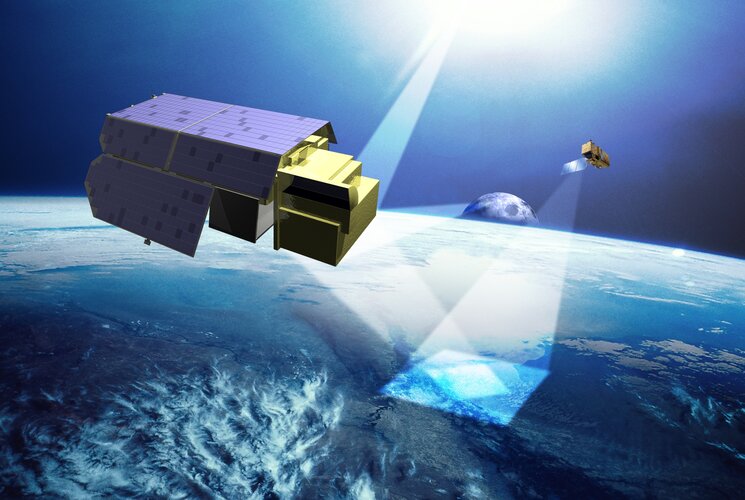
ESA’s new TRUTHS mission is taking shape. Highlighted today at COP26, this new mission is moving from its feasibility phase into its preliminary design phase. TRUTHS is set to provide measurements of incoming solar radiation and of radiation reflected from Earth back out into space as traceable International System of Units. These measurements will allow changes in Earth’s climate to be detected faster, and they will be used to calibrate data from other satellites. In effect, TRUTHS will be a ‘standards laboratory in space’, setting the ‘gold standard’ for climate measurements.
A mission to explore the methane lakes on Titan

Neither mission will be the first time Titan's surface has been visited, though. That distinction belongs to Huygens—a lander launched with the Cassini probe. Unfortunately, with the relatively limited technology of a probe launched in the late 1990s, it was only able to send data back from the surface for about an hour and a half.
Looking down during a day on Earth timelapse
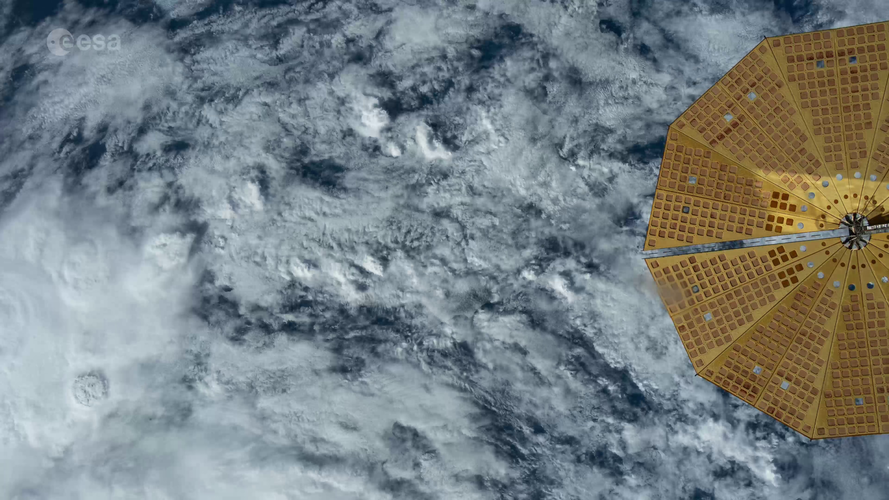 Video:
00:02:24
Video:
00:02:24
This timelapse video was made during ESA astronaut Thomas Pesquet’s second mission to the International Space Station, “Alpha”. The camera is setup to take pictures at intervals of two a second, and the pictures are then edited into this video that plays at 25 pictures a second. The video is around 12 times faster than real speed and was recorded on 20 September 2021.
Thomas shared this video on social media with the caption:
“Another timelapse looking straight down at Earth, but this time during the day, with Cygnus' solar array looking too. Each orbit over our planet passes
Best of Alpha mission timelapse
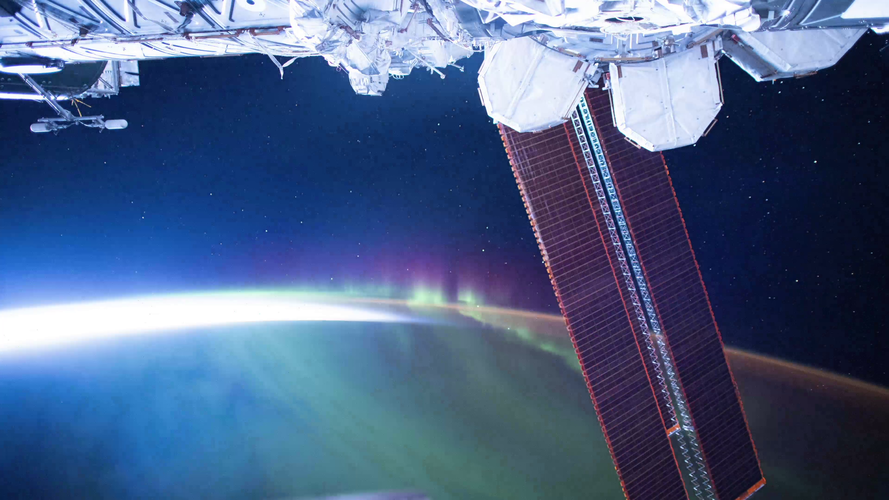 Video:
00:04:35
Video:
00:04:35
A collection of the best timelapse videos made during ESA astronaut Thomas Pesquet’s second mission to the International Space Station, “Alpha” in 2021. The camera is setup to take pictures at intervals of two a second, and the pictures are then edited into this video that plays at 25 pictures a second. Most videos around 12 times faster than real speed.
Thomas shared this video on social media with the caption:
“Probably the last the timelapse from space, and fittingly here is a special edition "best of" montage: aurora, lightning, spacewalks, day views and spacecraft reentry in less than
A Dragon awaits
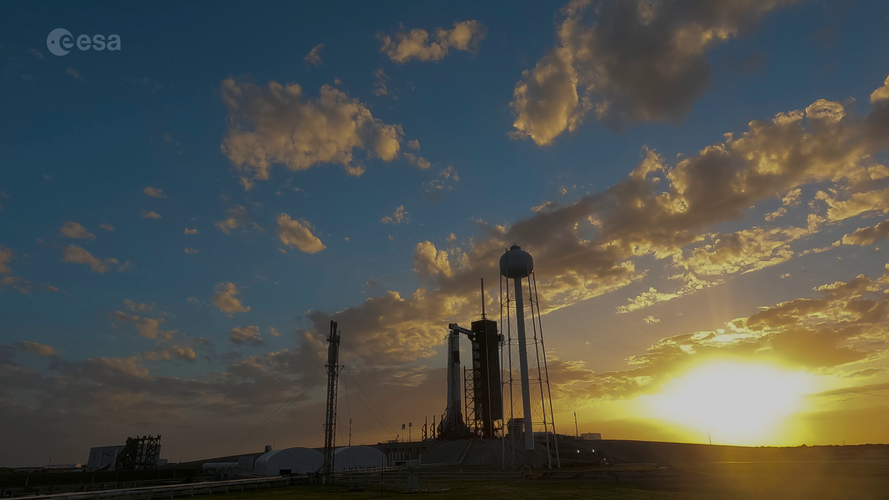 Video:
00:02:58
Video:
00:02:58
A timelapse of Launchpad 39A at NASA's Kennedy Space Center in Florida, USA, where the SpaceX Crew Dragon capsule Endurance sits atop a Falcon 9 rocket, ready to carry Crew-3 to the International Space Station.
Initially scheduled for launch on 31 October 2021, this Dragon will wait a bit longer due to weather along the flight path and a minor medical issue affecting a member of its crew. The next launch attempt is now no earlier than 03:36 GMT/04:36 CET, Sunday, 7 November.
When it does fly, it will transport ESA astronaut Matthias Maurer, as a member of Crew-3
Meltwater runoff from Greenland becoming more erratic
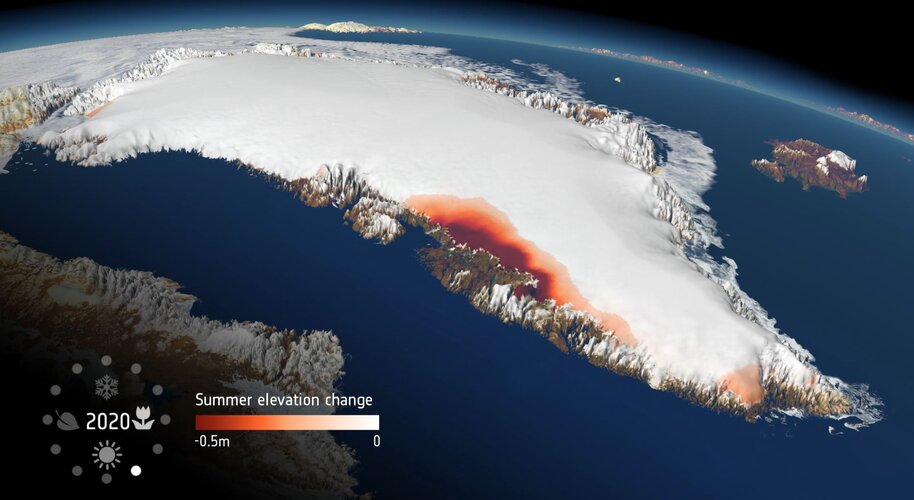
As world leaders and decision-makers join forces at COP26 to accelerate action towards the goals of the Paris Agreement, new research, again, highlights the value of satellite data in understanding and monitoring climate change. This particular new research, which is based on measurements from ESA’s CryoSat mission, shows that extreme ice melting events in Greenland have become more frequent and more intense over the past 40 years, raising sea levels and the risk of flooding worldwide.
